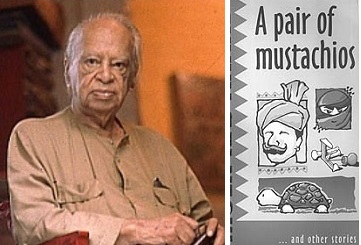Dec 20, 2025
Dec 20, 2025
Mulk Raj Anand, the most celebrated Indian novelist is one among the trio of Indian Writing in English along with R. K. Narayan and Raja Rao. His works endeavored to portray the social realities of British India in the language of the colonial master. Anand witnessed the Gandhian Period in Indian politics and literature in Indian languages began echoing Gandhian principles and philosophy. This impact was evident in Indian writing in English as well. Mulk Raj Anand was most deeply impressed by Mahatma Gandhi and his ways of life. His works endeavored to portray the social realities of British India in the language of the colonial master.

He was a champion of the 20th-century Progressive Writers’ Movement. He had drafted the first manifesto of the literary association. A forerunner of Indian Writing in English, he earned an international repute early in his life. He was born in Peshawar and educated at the Universities of Lahore, London, and Cambridge. He has achieved international fame as a novelist as well as a short story writer. He has penned novels like The Untouchable, Coolie, The Sword and the Sickle, Two Leaves and a Bud, etc. His remarkable short story collections include Lajwanti and Other stories, The Barber’s Trade Union and Other Stories, etc. He has written comprehensively in multifarious fields such as politics, art, sculpture, Indian literature, freedom movement, Gandhian impact, and so on. The laurels and accolades for his literary contributions comprise International Peace Prize from World Peace Council, Sahitya Akademi Award, Padma Bhushan, and Leverhulme Fellowship.
Mulk Raj Anand’s short stories unearth a deep sense of humour, simplicity of the village folk, pretensions of the people with the effective use of his creative language, and comic content. His “A Pair of Mustachios” is written in a humorous vein dealing with the funny clash that happens due to the upturned moustaches of Seth Ramanand, the grocer and money lender. The story written in a third-person narrative highlights the motifs of tradition, acceptance, freedom, class, and conformity. Anand initiates the story by expounding the different types of moustaches Indians possess. “There are various kinds of mustachios worn in my country to mark the boundaries between the various classes of people. Outsiders may think it stupid to lay down, or rather to raise, lines of demarcation of this kind, but we are notorious in the whole world for sticking to our queer old conventions, feelings of pride and prejudices, even as the Chinese or the Americans or, for that matter, the English.” In India, people wear long moustaches as a sign of pride and distinction. Like the Chinese, Americans, and the British, Indians also love to wear moustaches. The story progresses through the mouthpieces of Seth Ramanand and Khan Azam Khan, who claims descent from an ancient Afghan family whose heads were noblemen and councilors in the court of the great Moghuls.
“Khan Azam Khan, a tall, middle-aged man, is a handsome and dignified person, and he wears a tiger moustache and remains adorned with the faded remnants of a gold-brocaded waistcoat, though he hasn’t even a patch of land left.” Seth Ramanand has no ancestry to boast of though he is affluent and influential today in the village and its neighborhood. Khan Azam Khan certainly wears a tiger moustache, but Seth Ramanand who claims himself great by wearing a moustache that looks like a tiger moustache. One day Khan Azam Khan goes to the moneylender, Seth Ramanand’s shop to pawn his wife’s gold nose-ring. He notices the upturning tendency of the hair on Ramanand’s upper lip. This upturning makes the moneylender’s goat moustache look almost like his own tiger moustache. He abuses Seth Ramanand by calling him a “lentil-eating shopkeeper”, “swine” and “seed of a donkey.” “You know what I mean, seed of a donkey!’ said the Khan. Look at the way you have turned the tips of your moustache upwards. It almost looks like my tiger moustache. Turn the tips down to the style proper to the goat that you are! Fancy the airs of people nowadays!”
Seth Ramanand dutifully lowers down the tips of his moustache as he is very amiable. He never gets angry but triumphs on his customers like Azam Khan with his tactful nature and by infuriating the so-called pride. Though Seth Ramanand readily agrees to lower his moustache on Azam Khan’s request, the former lowers only one tip of his moustache. “But as he was departing, after negotiating his business, he noticed that though one end of the moneylender’s moustache had come down at his behest, the other end was still up.” Khan belongs to the tiger class moustache community whereas Ramanand belongs to the goat class clan. But, Ramanand defeats Khan at the end of the story by turning up the tip of his goat moustache like Khan’s tiger moustaches. This enrages Azam Khan, who sells all his property to Ramanand.
“And they laughed to see the Khan give a special twist to his moustache as he walked away maintaining the valiant uprightness to the symbol of his ancient and noble family, though he had become a pauper.”
The author here has mocked the society and its people who follow the false pride of their community blindly. They are not bothered by practical matters. They just want to retain their image and grandeur of the lineage in society. People like Ramanand are willing to bend but not break. They alter their values according to the requirements but do not compromise fully on their pride. The author has taunted those people who invite their own fall with their insensibilities.
31-Oct-2020
More by : Dr. Aparna Ajith

|
Nicep |